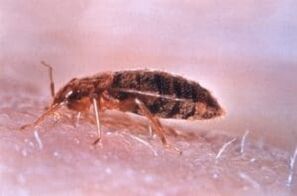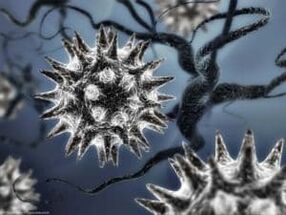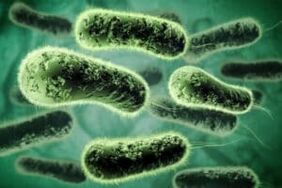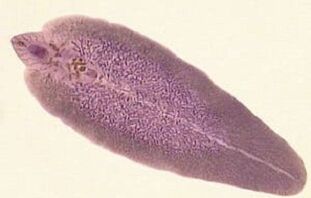By knowing the routes of entry of parasites into the body, it is possible to take preventive measures in contact with possible sources of infection. What are helminths, like intestinal parasites, is known to many. However, the common man is less aware of the species living in the circulatory system, subcutaneous lymph, muscles, brain and internal organs.
All types of parasites in the human body are classified into representatives: protozoa, flatworms, arthropods and their larvae.Viruses, pathogenic bacteria and fungi can be classified as parasites, but they are distinguished in a separate group. Infectious diseases are divided into: viral, fungal, bacterial and parasitic. The classification of human parasites includes - a unique species of fish (common vandellia), capable of penetrating the human urethra (occasional host).
Parasitism and its types

Who are parasites? These are organisms that live at the expense of another individual, not genetically related to him and that enter into antagonistic relationships, that is, interfere with life. The concept of parasitism should not be extrapolated to microorganisms living inside the body without causing it particular harm. In nature, there are plant and animal parasites, depending on the type of host. During the operation of this lifestyle, the parasite and host system works continuously. The task of the first: to live outside the second, without killing him for a long time.
Classification of parasites by type:
- Localization sites: external and internal parasites (exo- and endoparasites).
- By way of life: constantly parasitic (obligatory) and living forms, which under certain conditions begin to exist at the expense of another organism (optional parasites).
- According to the time of contact with the host: temporary and permanent parasites (immobile and periodic).
In the food chain, animal parasites are usually second- or third-rate consumers, as they feed on herbivores or carnivores. The way the parasite feeds deprives the host of nutrients and / or leads to the destruction of cells and tissues. Host antagonism often occurs because dangerous residents release toxic metabolic products. This leads to certain symptoms (allergies, disorders of the digestive system, signs of damage to various internal organs).
Viruses

Viruses are intracellular parasites of a protein-genetic structure. Due to the cell materials, they reproduce themselves. The virus is a mandatory parasite.
According to the classification, depending on the type of genetic material, viruses containing RNA and DNA are isolated. Intracellular agents of the first group include:
- Enteroviruses. They multiply in the digestive tract, cause problems in various human organs.
- Rinoviruset. The causative agents of ARVI.
- Influenza, rabies and tick-borne encephalitis viruses.
- Papillomaviruses.
The second group includes: adenoviruses (cause acute respiratory infections), herpes and smallpox pathogens.
Viruses, entering the target cell, subject their processes to themselves, integrate into the genetic material or localize in the cytoplasm, then replicate (multiply). Then, cell death occurs as a result of lysis, apoptosis, or distortion of the membrane structure. Some agents (papillomavirus, Epstein-Barr virus) are capable of causing cell degeneration in malignant ones.
How viruses penetrate inside:
- Air.
- Through the gastrointestinal tract when you drink water and eat food.
- Through the skin and outer mucous membranes, such as the conjunctiva of the eye.
- By means of arthropod vectors (insects, ticks).
- As a result of using non-sterile medical devices (syringes, pipettes).
Each virus is adapted to a specific cell, distinguishes the target with the help of receptors.
Bacteria

Among bacteria, racquets, intracellular parasites, occupy a special position. These are the most primitive representatives that resemble viruses. In humans, these microorganisms cause: typhoid, tick-borne rickettsiosis, Rocky Mountain spotted fever. People become infected with rickettsiae through tick bites, fleas, lice.
Other intracellular chlamydia parasites cause one of the most common venereal diseases (chlamydia) and cause serious eye inflammation, pneumonia in infants and enteritis.
Dangerous bacteria include:
- Salmonella is the cause of typhoid fever.
- Tetanus rod.
- A pale spirochete that causes syphilis due to a difficult diagnosis of the disease, which leads to a delay in treatment.
- Pneumococci, which can cause pneumonia and, less commonly, bacterial meningitis.
- The tubercle bacillus, which may not appear for a long time and then return to an open form.
- Escherichia coli because of its ability to take resistance to antibiotics. Causes gastroenteritis, rarely meningitis and urinary tract infection.
External parasites such as Staphylococcus aureus are known to cause a wide range of skin infections. The most dangerous consequences of its activity: pneumonia, meningitis, osteomyelitis, endocarditis, severe shock due to exposure to bacterial toxins and sepsis (in everyday life it is called blood poisoning).
Mushrooms

Disease-causing fungi - human parasites are better protected from the effects of drugs than bacteria. The most common fungal disease is candidiasis (tonsillitis), localized in various mucous membranes with a weakened immune system. Fungi of the genus Candida live in the body of any healthy person and cause tangible damage only if the protective function fails. Conditionally pathogenic bacteria and fungi are a boundary group of microorganisms between non-pathogenic and pathogenic categories. Therefore, as a rule, they are not classified as parasites.
Mycelial pathogenic fungi are human parasites that often cause external element diseases:
- Keratomycosis. Fungal reproduction occurs in the keratinized area of the epidermis or in the hair cuticles (trichosporia nodosum, versicolor versicolor).
- Dermatophytosis. Pathogens affect not only the epidermis, but also the dermis, nails and hair (ringworm, scabies).
- Deep mycoses. Damage to nearby skin and tissues, as well as internal organs. These include histoplasmosis - a serious systemic fungal disease and aspergillosis - damage to the mucous membranes and skin caused by aspergillus.
The classic sources of bacterial and fungal infections are sick people, animals, soil, contaminated water and food.
Protozoa
Protozoa is another unicellular parasite along with bacteria and fungi. Which protozoan parasites of a person are isolated depending on the systematic position?- Some species of amoebae are optional parasites. The most famous is the amoeba of dysentery, which enters the human body in the form of a cyst (resting form). The pathogen enters the colon (luminal form), then penetrates the mucosa and affects various internal organs with blood flow. Amoebae are aquatic organisms, so the main source of infection with them is polluted water. Acanthamoeba keratitis is a rare eye disease called acanthamoeba keratitis, which has become more common due to the increasing popularity of contact lenses. Flaxhelat (Leishmania, Giardia, Trichomonas). Trichomoniasis is the most common disease of the genitourinary system, dangerous for its complications (infertility, prostatitis, premature birth, etc. ).
- Apicomplexes (sporozoans). With the exception of colpodellids, the group includes only obligate parasites (Toxoplasma, Plasmodium malaria, Cryptosporidium, Coccidia, sarcocysts). Sporozoal cysts enter the body after being bitten by insects, eating infected animals or drinking water.
- Ciliate. For humans, balantidia is dangerous, provoking diarrhea and ulcers in the intestinal wall as a result of activity in the colon. Ciliates are the largest single-celled pathogenic organisms.
The simplest human parasites cause protozoan infections (protozoa). Which parasites live in the human nervous system among protozoa? For example, the causative agents of toxoplasmosis and cerebral malaria. Among amoebas, the optional parasite Neglerius Fowler is capable of infecting the nervous system.
Multicellular
Multicellular parasites include flatworms, roundworms, arachnids and insects. The former, as a rule, settle inside a person (in different systems and internal organs), and certain species migrate or penetrate (newborns, larvae of Gnathostoma spinigerum and worms, schistosomes) into the subcutaneous layer. Worms is the common colloquial name of all worms that cause helminthiases.
Common diseases caused by flatworms
Group of trematodes (genetic currents):
- Opisthorkiaza. Causing agents: types of liver colds, for example, cat and sibe. Infection occurs as a result of eating infected, poorly processed river fish. Fascioliaza. Caused by hepatic and giant confessions. Infection occurs through the consumption of polluted water or coastal grass.
- Paragonimiaza. The cause of the disease is a pulmonary stroke, which is found in hot climates. A crab or freshwater crab thermally infected with worms and poorly processed is dangerous.

The life cycle of the parasite from the trematode group is complex, including several larval stages and gastropods as intermediate carriers. Flukes are vertebrate animal parasites, acting as temporary and permanent hosts. The individual stages of the larvae are able to develop without fertilization. Fluke equipment for arranging and feeding inside the host are suckers.
Tapeworms are mandatory parasites of the human small intestine. Their body consists of segments (proglottida), which periodically break down and come out along with the fertilized eggs. The stages of the worm life cycle necessarily include the fin (bubble worm), which forms in a temporary owner. The permanent host swallows the Finn, which develops into a narrow (adult) form. The structural characteristics of worms are the lack of a digestive system and the absorption of nutrients from the entire surface.Most common:
- Bovine tapeworm (unarmed tapeworm) causes teniarinosis disease. The infection occurs through beef, the muscles of which are contained by the Finns, formed in the body after the animals swallowed the eggs with food.
- Pig tapeworm (armed tapeworm) is the causative agent of cysticercosis (Finn stage) and teniasis (adult). In addition to suckers, the helminth is fitted with a hook edge. A person can simultaneously perform the function of an intermediate and permanent owner.
- Wide tape causes difilobotriasis. Intermediate hosts are copepods and fish. A person can be infected through insufficiently salted caviar and freshly cooked or fried freshwater fish.
Parasites feed on blood and tissue (flukes) or digested food (tapeworms).
Round worms
What common types of parasites in humans are roundworms (nematodes)?

- Ascaris. Ascariasis includes migratory (larval) and intestinal (adult) stages. The larva penetrates the wall of the small intestine, moves to the lungs, bypassing the liver and heart, passing successively through the stages of molting. It enters the oral cavity, is swallowed again and becomes an adult in the small intestine.
- Red worm. The causative agent of enterobiasis feeds on the final and initial areas of the small and large intestines, multiplies in the ileum. Females lay eggs in the anal folds, causing severe itching.
- Vlasoglav is the cause of trichocephaly. These parasites in the human body invade the mucosa of the initial section of the colon and feed on tissue fluid and blood.
- Trichinella causes a dangerous disease of trichinosis. In severe cases, the nervous system is damaged. These are the real killers, whose larvae penetrate the wall of the small intestine and are carried throughout the body. Mostly they are inserted into the striated muscles, they can penetrate the eyes, causing pain and swelling of the face, to the lungs, leading to a cough. So far, no cure has been invented for a complete cure.
- Toksokara. Distinguish between larval toxocariasis (most common) and imagination (intestinal). Invasion is characterized by the severity of allergic reactions. The larvae spread throughout the body, entering the tissues, encapsulating and forming granulomas.
- The fly worm is most common in the tropics and subtropics. With worm infection, worms inside the intestines secrete proteolytic enzymes that destroy the walls and reduce blood clotting. Parasites within a person appear as a result of the introduction of larvae through the skin by contaminated water.
- Escherichia coli and similar species are tropical parasites. The disease they cause, strongyloidosis, can be asymptomatic for decades. With reduced immunity, worm carriers are at high risk of death (60-85%).
- Rishta is a subtropical helminth that causes dracunculosis. The larvae penetrate the intestinal wall. Females reach the subcutaneous layer and when the host is in the water, they expel the larvae through the skin. The temporary host is a copepod lobster.
The habitat features of the parasites affect the way they enter the body: contact with contaminated water or soil, with the larval stage carriers that inhabit them. Many representatives of roundworms have no intermediate hosts and belong to geohelminths. Infection with them occurs mainly through contaminated water, unwashed hands, fruits or vegetables, as well as through the consumption of meat by wild animals.
Treatment and the terrible consequences of helminthiasis
An important way to diagnose helminthiasis is a blood test. Eosinophils (a type of white blood cell) found in high concentration along with other signs of infection indicate the presence of a worm and a number of pathogenic protozoa in the body. How are helminthiases treated? Drugs are used to relieve specific symptoms and treatment. Antiallergic (desensitizing) and detoxifying therapy is used. Basically, medicines are administered by infusion (using drops), sometimes injections are used:
- A drug that replaces plasma and removes the effects of toxins.
- Isotonic solution of glucose and salt.
- Vitamins C and B6. Sodium bicarbonate (soda), calcium chloride or gluconate.
- Preparations used at elevated temperatures.
- Hormonal drugs are used in difficult situations (with hepatitis or allergic myocarditis). Potassium intake is combined with them.
- Medications for heart failure and edema.
There is evidence that some parasitic worms, such as birdworms, can cause cancer. Larval stem cells can degenerate into carcinogenic ones. Indirect parasites can cause cancer by weakening the immune system. Interesting data were obtained in the study of the effect of trematodes affecting the liver. As a result of exposure to waste streams, normal cells can turn into cancerous cells. The parasites are mainly localized in the digestive system, but their larvae are able to penetrate into various internal organs. For example, in the kidneys (echinococcosis, schistosomiasis), heart muscle (cysticercosis, worm disease), liver (echinococcosis). Parasitic worms in humans often affect the nervous system. Known cysticercosis, echinococcosis, alveococcosis and schistosomiasis of the brain.
Arthropods
The order of insects includes ectoparasites known as fleas, bed bugs, blood-sucking dipterans. Unlike lice, these are temporary parasites, meaning they live uninterruptedly with the help of the host. Arthropod parasites in the order of arachnids include the well-known scabies mites. Mating of males and females occurs on the surface of the epithelium. The parasites in the human body then lay their eggs in the keratin layer of the skin, causing severe itching. Many people know what ixodid ticks are. These are arthropod parasites from the order Arachnids, including the most famous representative of the tick - the carrier of dangerous infections (tick-borne encephalitis, Lyme disease). Among the dipterans that suck blood are: non-malarial mosquitoes and malaria, mosquitoes, midges, stinging midges, fly horses and real flies. These arthropod parasites can cause a strong allergic response, and are also carriers of dangerous viral and bacterial infections. Some flies, especially dwarfs, deposit larvae under human skin, causing mites. The larvae are able to penetrate the body.






































